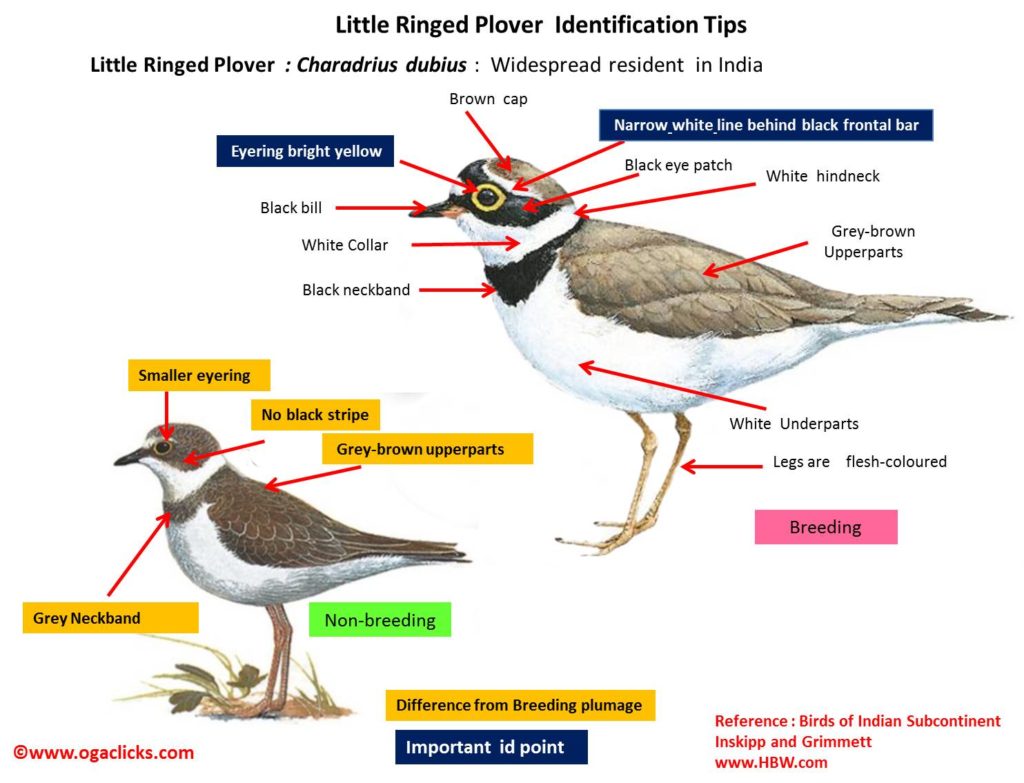
Little ringed Plover Charadrius dubius
Etymology:
- Charadrius : Greek word kharadrios for unknown plain-coloured nocturnal bird that dwelt in ravines and river valleys
- Dubius : Latin word for Doubtful, dubious
Vernacular Names: Hindi: Zirrea, Merwa Batan, Kash: Kola katij, Pun: Marwa, Ben: Jira, Guj: Vilayatijinititodi, Mar: Chota Kantherichilkha, Ta: Mani mandaiullan, Chinnakottan, Te: Bytuulanka, Rewa, Mal: Motira kozhi, Attumanal kozhi, Kantavalinani dhongili, Kan: Kari patte plover, Sinh: Punchioleyiya
Distribution in India: Widespread resident in India
Description: Size of 14-17 cm. Adults have a grey-brown back and wings, a white belly and a white breast with one black neckband. They have a brown cap, a white forehead, a black mask around the eyes with white above and a short dark bill. The legs are flesh-coloured and the toes are all webbed.Eye ring is bright yellow. Thejuvenile resembles non-breeding adult but olive-brown upperparts have buff fringes.
Habitat: It is found in bare or sparsely vegetated flats of sand, shingle or silt; avoids rough terrain and tall or dense vegetation. Often in vicinity of standing or slow-flowing fresh water; sometimes saline inland pools and flats, or brackish lagoons and estuaries.
Food Habits: They eat mainly insects and their larvae, such as beetles and other invertebrates.Sometimes wade up to breast in water and insert entire bill into mud. It forges by running longer distances and more frequently, and pausing for shorter periods. Feeds solitarily or in scattered flocks, often mixed with other waders, on mudflats, salt pans and salt marsh, rarely at water’s edge. Prefers softer mud over harder substrates. Sometimes forages at night.
Breeding Habits: They breed in March- May. They are Monogamous for at least one brood, occasionally for several years; sometimes third bird joins during breeding, as “helpers”. Nest is a shallow scrape, unlined or lined with some vegetation and stones, on bare ground or among low vegetation, in vicinity of water, occasionally on level roofs; often on small Island. They lay a clutch of 3-4 eggs is laid. Up to three replacement clutches can be laid in case of clutch loss. The incubation period is 22–28 days, by both adults, beginning with last or penultimate egg.Chicks are tended by both parents, but female leaves family party before male in order to lay new clutch or to migrate. The fledging period is 24–29 days. The young become independent 8–25 days after fledging.